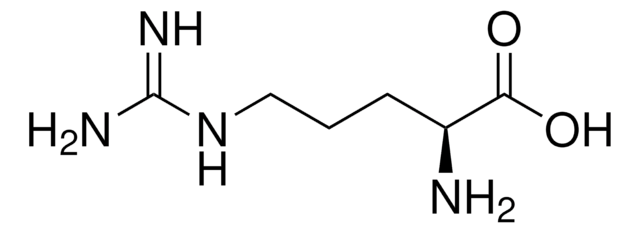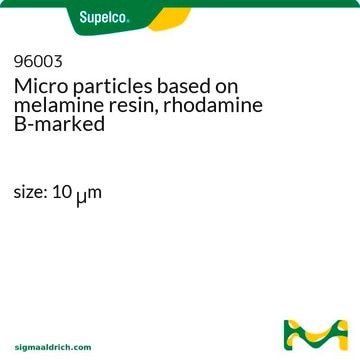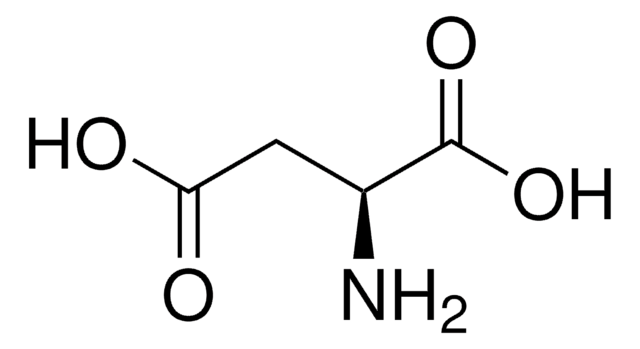A4599
L-Arginine monohydrochloride
Pharma Manufacturing
Synonym(s):
(S)-(+)-2-Amino-5-[(aminoiminomethyl)amino]pentanoic acid monohydrochloride, (S)-(+)-Arginine hydrochloride
About This Item
Recommended Products
biological source
non-animal source
Quality Level
assay
≥98.5%
form
crystalline powder
manufacturer/tradename
Ajinomoto
technique(s)
cell culture | mammalian: suitable
impurities
endotoxin, heavy metals, residual solvents, tested
solubility
H2O: 100 mg/mL
density
1.42 g/cm3 at 20 °C
anion traces
chloride (Cl-): 16.58-17.00%
sulfate (SO42-): ≤0.020%
cation traces
As: ≤1.0 ppm
NH4+: ≤0.02%
heavy metals: ≤10 ppm
application(s)
pharmaceutical (small molecule)
foreign activity
cytotoxicity, tested
SMILES string
Cl[H].N[C@@H](CCCNC(N)=N)C(O)=O
InChI
1S/C6H14N4O2.ClH/c7-4(5(11)12)2-1-3-10-6(8)9;/h4H,1-3,7H2,(H,11,12)(H4,8,9,10);1H/t4-;/m0./s1
InChI key
KWTQSFXGGICVPE-WCCKRBBISA-N
Looking for similar products? Visit Product Comparison Guide
Related Categories
General description
M-Clarity Program
Our comprehensive portfolio of upstream process chemicals not only provides biopharmaceutical manufacturers with high-quality raw materials for production of classical and novel therapies, but also helps them get to market faster and simplify regulatory challenges. Trust us to deliver supply chain transparency and reliable sourcing around the globe, streamlining your product qualification with best-in-class regulatory support and service.
Application
Biochem/physiol Actions
Legal Information
Storage Class
11 - Combustible Solids
wgk_germany
WGK 1
flash_point_f
Not applicable
flash_point_c
Not applicable
ppe
dust mask type N95 (US), Eyeshields, Gloves
Certificates of Analysis (COA)
Search for Certificates of Analysis (COA) by entering the products Lot/Batch Number. Lot and Batch Numbers can be found on a product’s label following the words ‘Lot’ or ‘Batch’.
Already Own This Product?
Find documentation for the products that you have recently purchased in the Document Library.
Customers Also Viewed
Our team of scientists has experience in all areas of research including Life Science, Material Science, Chemical Synthesis, Chromatography, Analytical and many others.
Contact Technical Service



